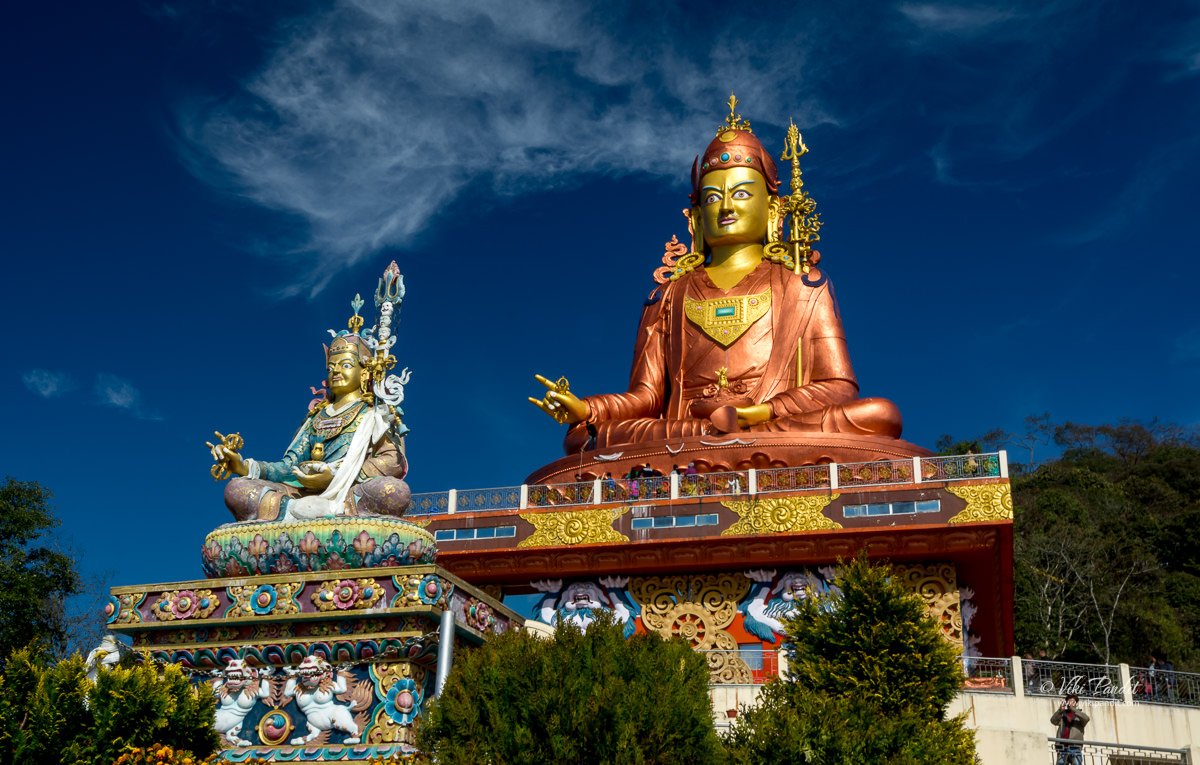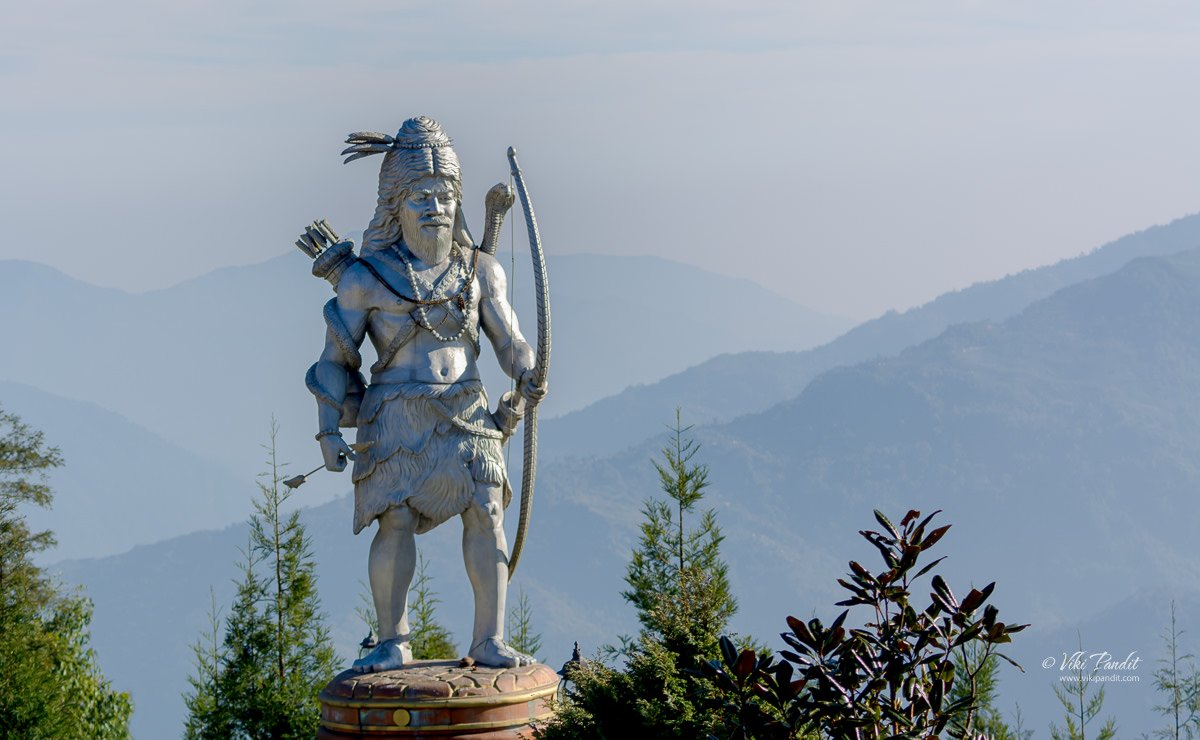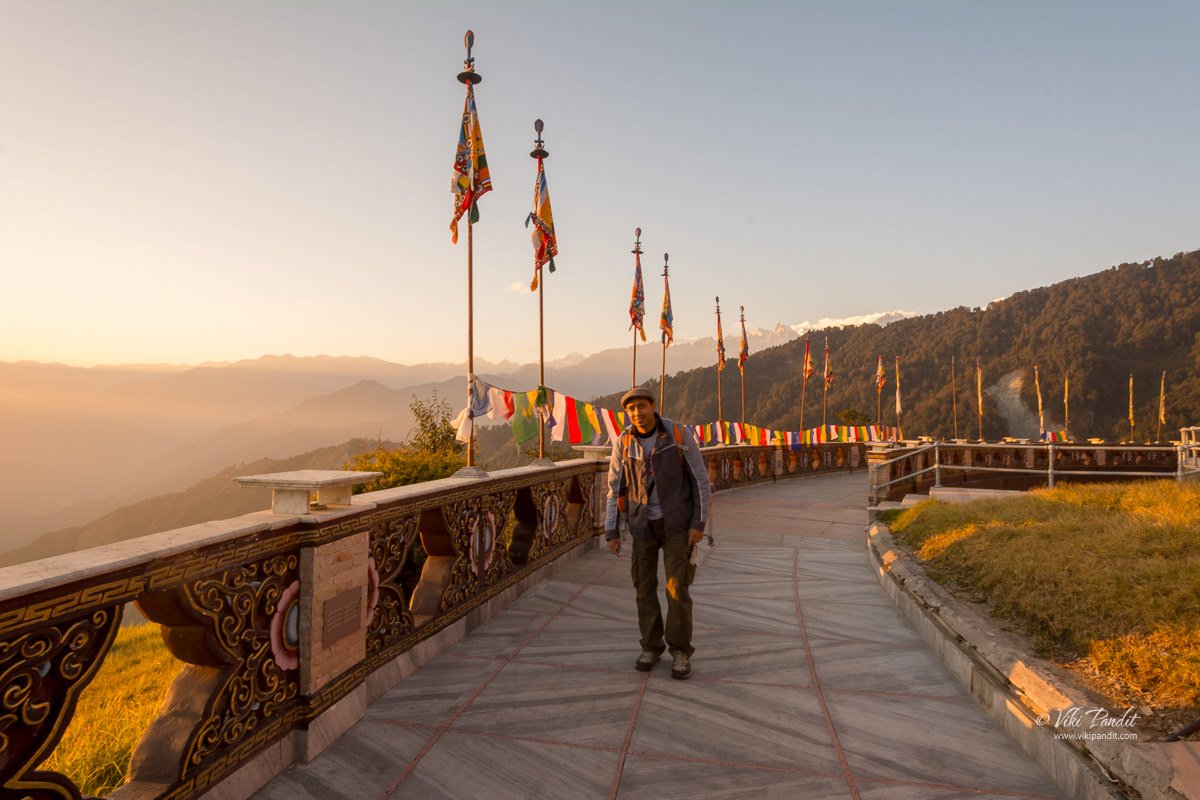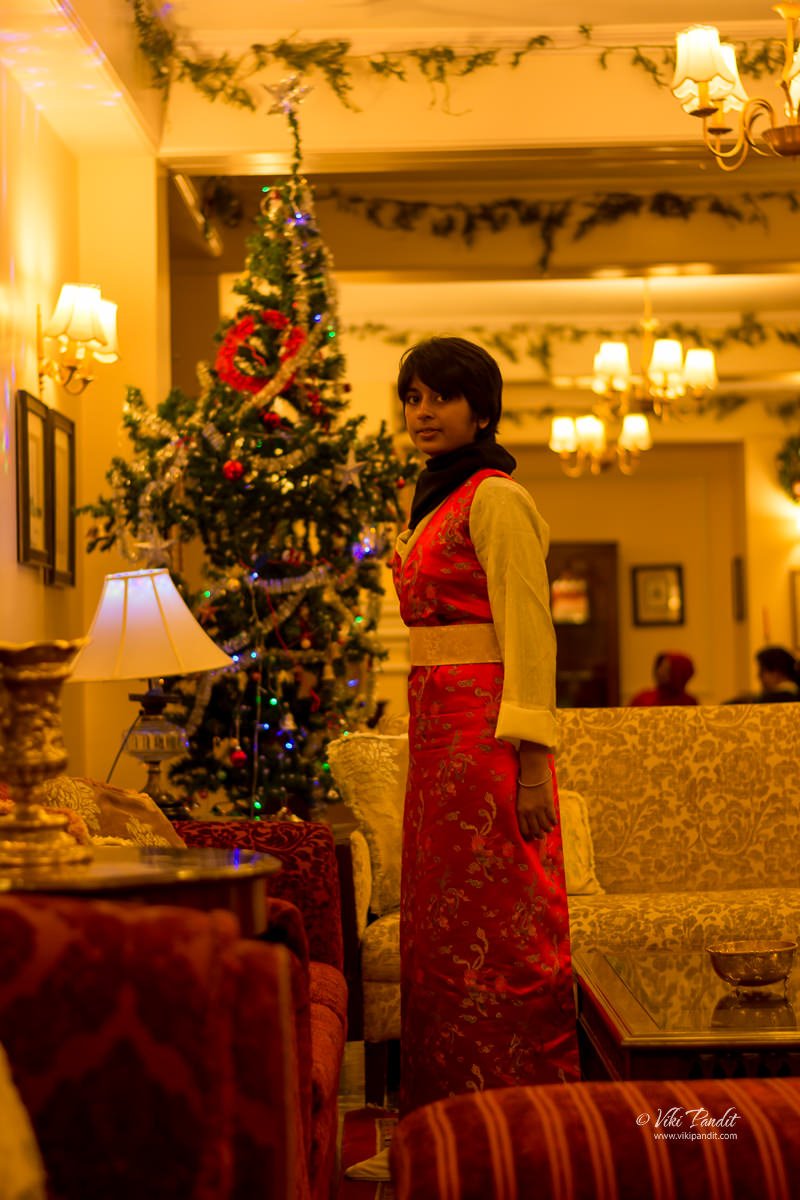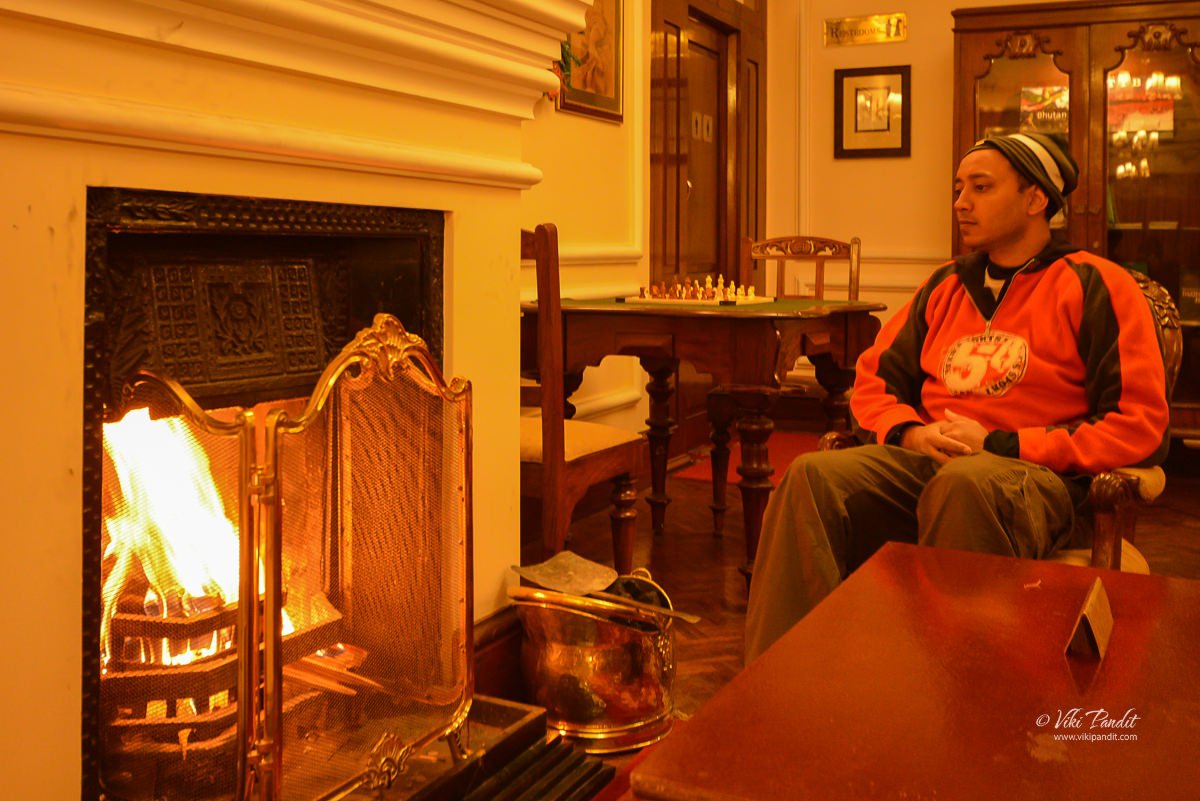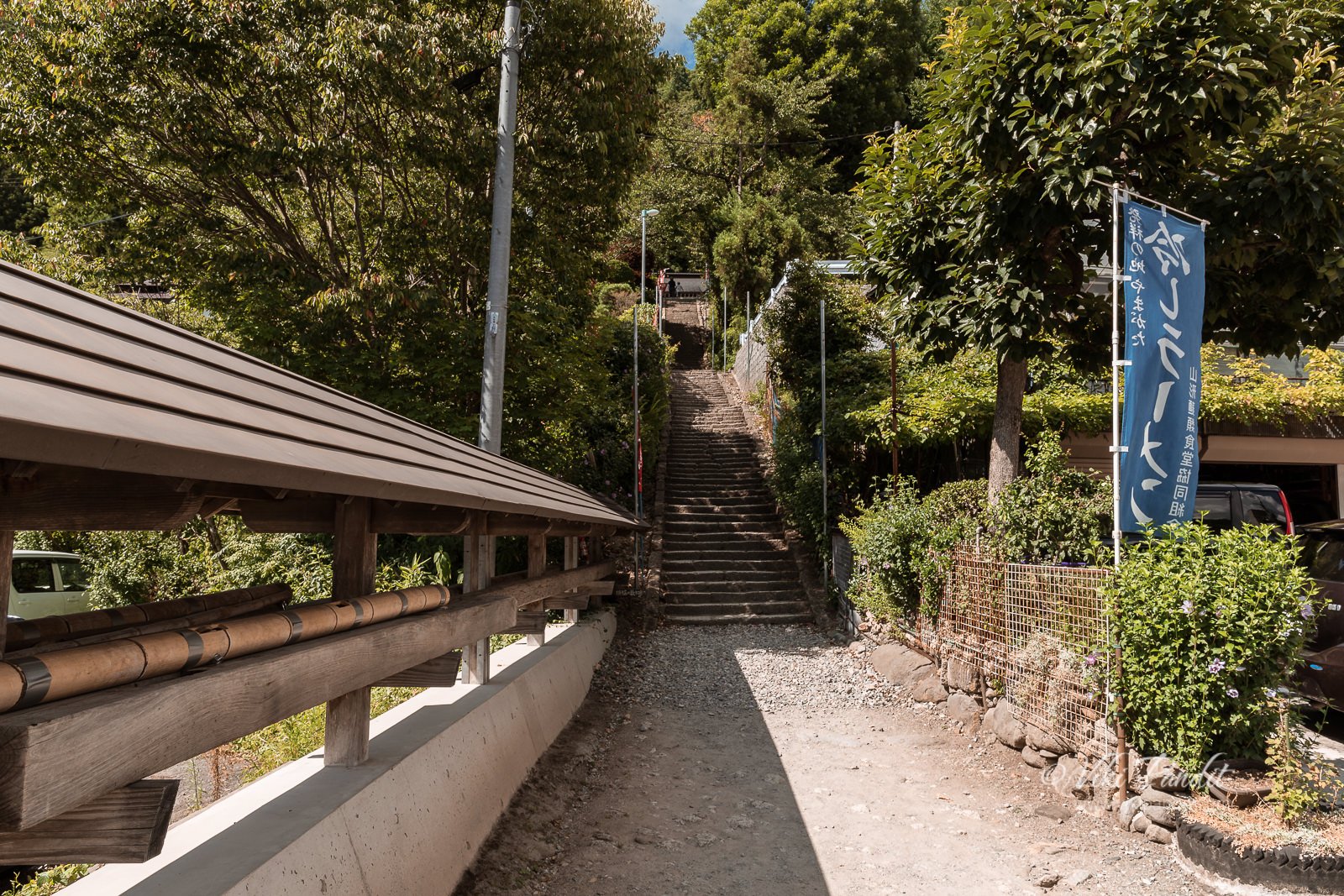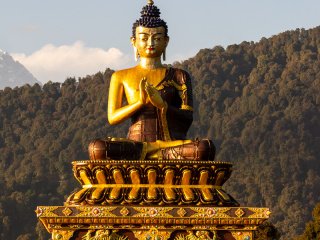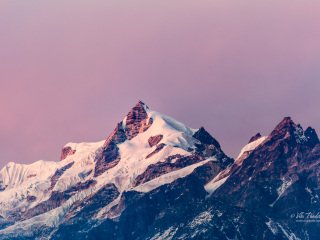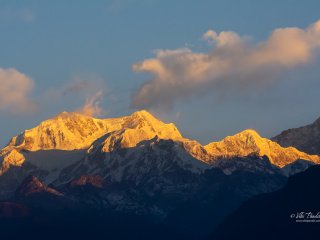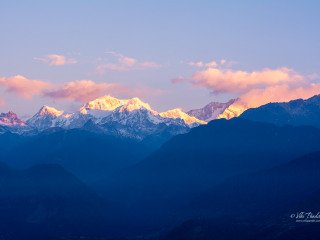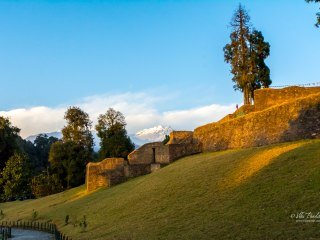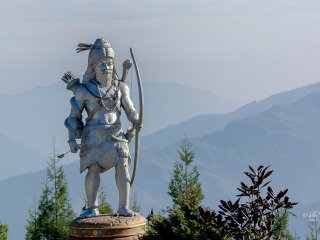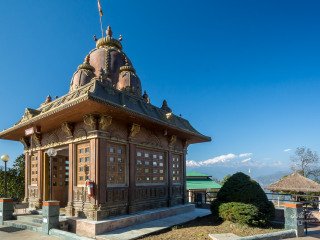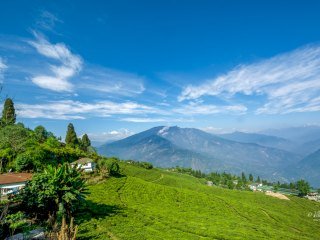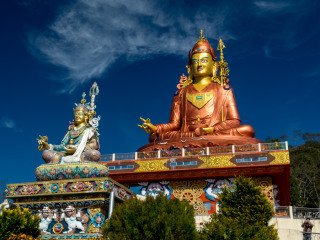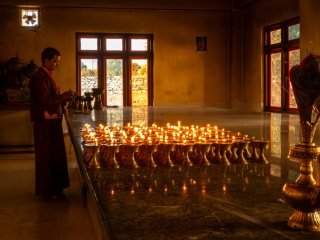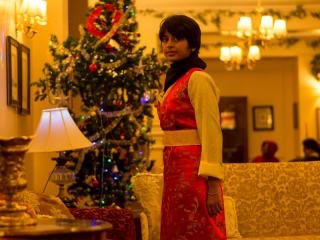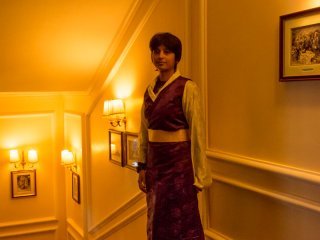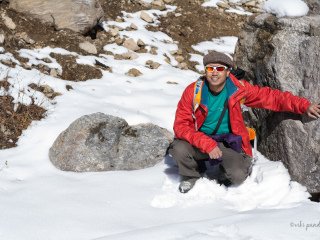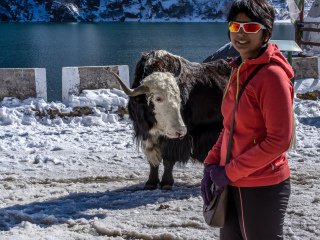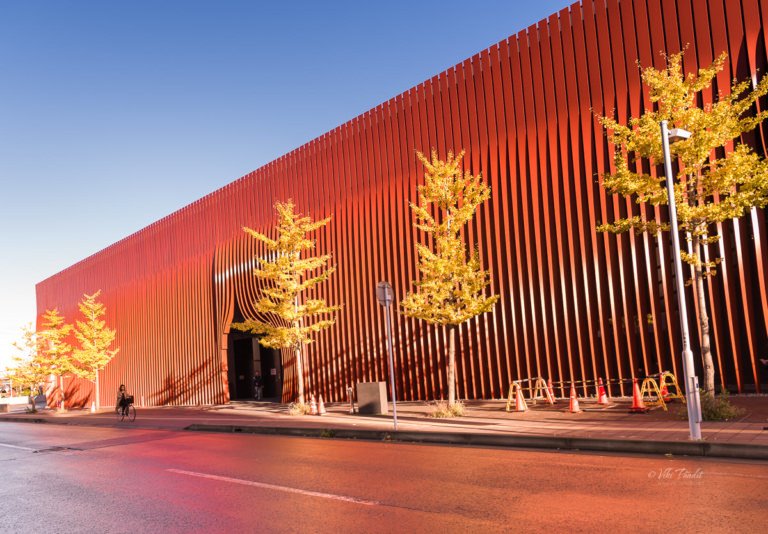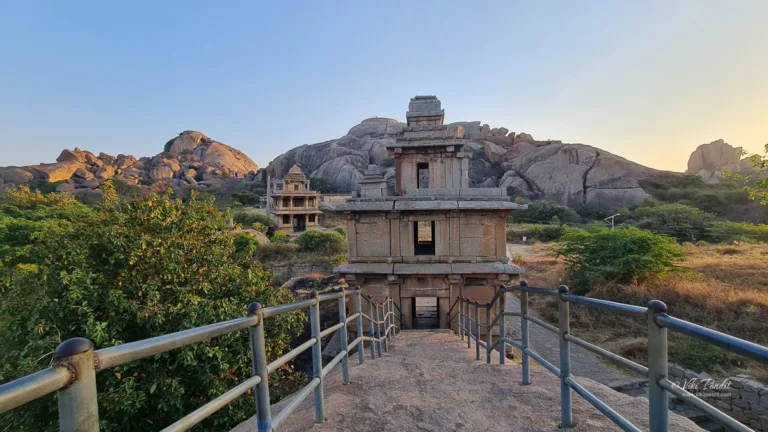Our tour to Gangtok starts with us landing in Kolkata. Our plan was to first spend some time with my in-laws and then proceed to the misty mountains.
The next couple of days were a string of delectable meals and stories from yesteryear’s. My sis, who lives in Kolkata, also dropped in for a get together over lunch.
The days passed quickly and it was time for us to leave for Bagdogra. Early morning Spicejet informed us that the flight would be delayed by 3 hrs. In hindsight it should have started the alarm bells ringing since lately they had been cancelling a lot of flights. Even a few months back they had been one of the more dependable carriers in Indian skies.
As we were about to get in the car for our ride to the airport, I discovered that the flight had been cancelled. Initially I thought maybe it could be an error as they had not informed me and probably we were moved to another flight. I tried calling the customer care but couldn’t get through to them. Left with no concrete information, we decided to go to the airport and take it from there.
Once we reached the airport, we were informed at the gate that our flight had indeed been cancelled. We went to the Spicejet counter and found a crowd had already gathered. Not only ours, we heard that all Spicejet flights had been grounded. Our Hotel booking etc. had already been done, so we were desperate. We immediately purchased tickets for the next afternoon to Bagdogra from Indigo Airlines.
We came back the next day. Fortunately, this time everything was fine. Our return flight was also via Spicejet, but with my trust shattered, I decided not to take a chance and purchased a backup return ticket from Indigo.
The flight to Bagdogra from Kolkata is all of 55 mins. Midway through the flight we were blessed to see the mesmerizing Khangchendzonga mountains in the horizon.
The Bagdogra airport is comparatively a lot smaller. We were alerted on the plane itself that photography is strictly prohibited in and around the airport. There was still daylight when we descended. Our travel arrangements for the transfer from the Airport to Gangtok was already done and the driver was waiting for us. The checkout process was quick and we were promptly on our way to Gangtok.
Drive to Gangtok
It was early evening as we started for Gangtok along the NH31A. The driver informed us that it would take around 4 hours to reach Gangtok. The NH31A highway runs parallel to the Teesta river almost all the way to Gangtok. Though in its current state, the river appeared more of a stream. During my childhood days, I had numerous times heard about the raging Teesta and the destruction it used to cause during the monsoons. Over the years numerous dam constructions on the Teesta by China has converted the raging river into a whimpering stream. Maybe during monsoons it would be more aggressive.
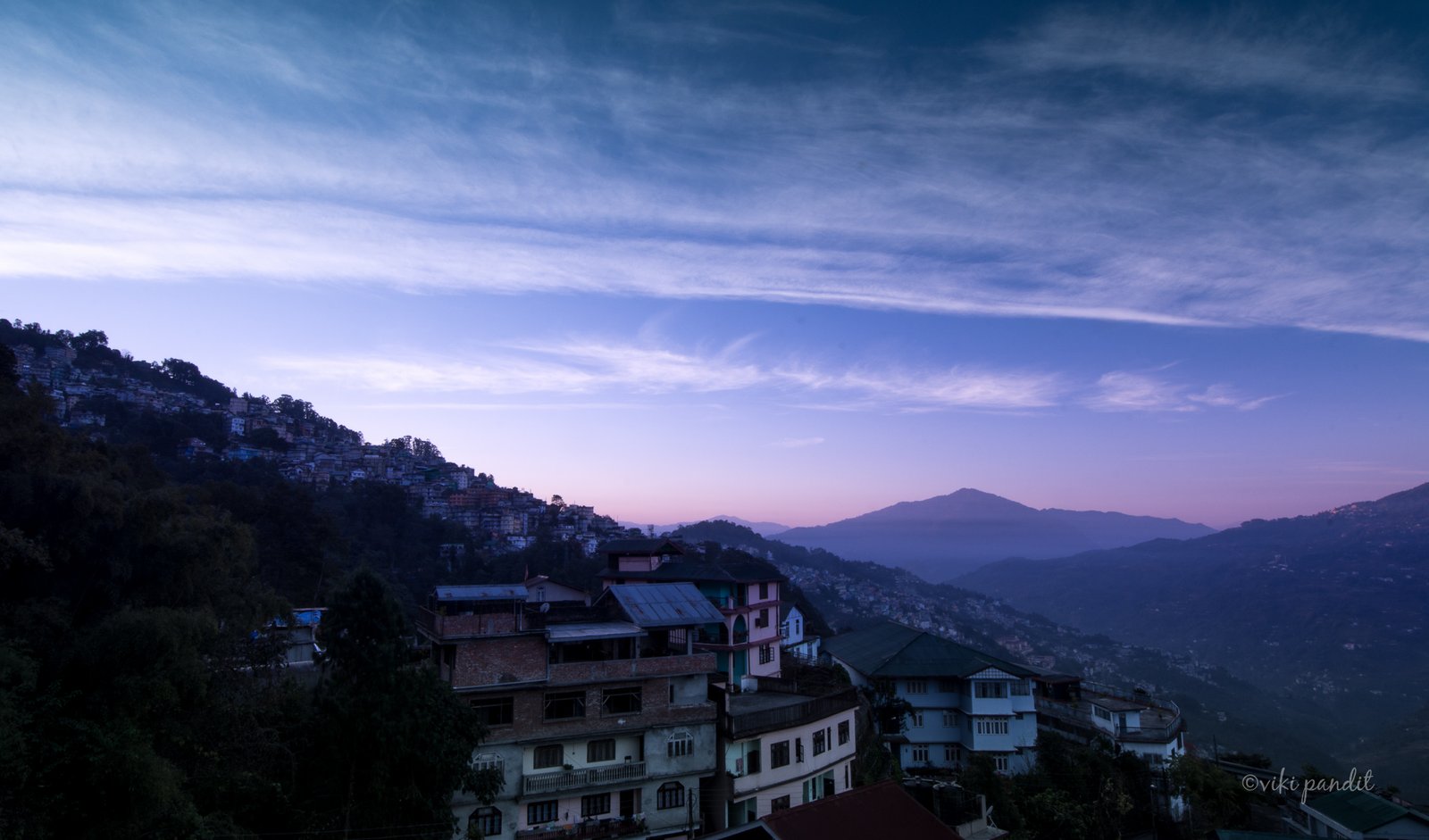
Every day, I woke up at 5 a.m to see this exhilarating view of Gangtok. Some days it was foggy, but one day I was lucky enough to get this view
Sunset happens quite early in the East. As twilight started to set in, the hamlets on the hills lit up. In the dark, momentarily I mistook the lights from houses up the hill to be stars. After 4 hours of chugging along rocky roads, we finally reached our hotel, Golden Crescent at around 7 p.m.
Our rooms were ready and we were promptly checked in. The room was huge with fully wooded interiors and floors. The bed was inviting. The bathroom was neat with running warm water. They had also provided us with a room heater though we didn’t need it much. Gangtok was pleasantly cool all throughout our stay. The Wi-Fi was sketchy but good enough. They also provided us with an electronic safe on request. Overall our stay at The Golden Crescent was quite pleasant.
Day 1
[su_divider top=”no” text=”Day 2″ style=”double” divider_color=”#ff2e21″][/su_divider]
Enchey Gompa
After a good nights rest we started the day with a visit to the nearby Enchey Monastery. This monastery was established in 1909 around a hamlet. Over the years this monastery has grown into an important religious center. According to a legend, Guru Padmasambhava had subdued the spirits of the Khangchendzonga, Yabdean and Mahākāla here.
The monastery is located on a ridge of a hill, northeast of Gangtok city, not more than 30 minutes away. On the way we passed Siniolchu Lodge. Siniolchu Lodge was one of the options we had looked into while deciding on the Hotel to stay in Gangtok, but decided against it since this place is a little far away from the main town and phone/internet connectivity could have been a problem.
We got down at the entrance and walk towards the “Gompa.” The moment I left the car and started along the narrow elevated path, I could feel the serenity of the place. The pathway was lined with colorful prayer flags fluttering on one side. A few steps ahead they gave in to a line of prayer wheels. The Enchey Gompa also serves as a residence for monks. Like all other Nyingmapa monasteries in Sikkim, this monastery is under the jurisdiction of the Pemayangtse Monastery in Pelling. At the top the view is beautiful with the Khangchendzonga range, looming towards the right of the monastery.
We were lucky to be there at the right time. Prayers were going on as we entered the monastery. The ceiling was adorned with long hanging lamps. There is a golden Buddha statue inside. A group of 12 monks, some in their early teens were sitting at the tables, chanting. There were donation boxes in front of each monk. Mani donated some. We stood there for some time, letting the chants touch us spiritually.
The monastery grounds has another small building on the left of the Gompa. We went around the back looking at the windows of the monastery, strikingly designed and beautiful in colors. After some time we walked down and headed for Rumtek Monastery which was on another hill.
Rumtek Monastery
Rumtek Monastery is located about an hour (23 kms) from Gangtok and is a good example of Tibetan architecture. Although the monastery was initiated in the mid 1700’s it really came into prominence in 1966 when the 16th Karmapa officially inaugurated the new seat, called “The Dharmachakra Centre.” This monastery also belongs to the Nyingma order and operates under the jurisdiction of the Pemayangtse Monastery.
The gates are guarded by Indian Army and one needs to display ID cards to enter. We had to walk for about 10 mins on an elevated path to reach the monastery. The monastery is perched on a hill overlooking the Khangchendzonga range. There are a number of small roadside shops all along the path, selling Tibetan souvenirs.
The entrance to the monastery leads to a big open area. The main hall is surrounded by corridors on all sides. The left and right corridors also have rooms for the residing monks. Unfortunately, inside the main hall, everything was covered with sheets. Gautama Buddha’s statue at the back was visible but everything else surrounding it was covered. We later discovered that there was going to be a festival in a couple of days and they were preparing for it.
There was not much to see inside the main hall, so we came out. We were allowed to climb up on the terrace of the side corridors. We sat there for a while looking at the Khangchendzonga. One of the younger monks who was a bit curious asked me if what I was carrying was a camera. From what broken Hindi he spoke I could understand how cut off from the real world they remain.
On our way back we stopped at a few shops and got some really fine souvenirs. I bought a couple of prayer wheels for gifting away. Mani bought a turquoise pendant with the Buddhist chant “Om Ma Ni Pad Me Hum” engraved on it. Walkig back I took a few pictures of the Khangchendzonga . We then headed back towards the city.
Do-Drul Chorten
Back in the city, we headed to Do-Drul Chorten. The Do-Drul Chorten was built in 1945 on a hillock and is surrounded by 108 Mani Lhakor or prayer wheels. It is considered to be one of the biggest stupas in Gangtok. We went all around the Chorten, turning all the prayer wheels in clockwise direction. Beside the Chorten is a school for little monks. The Chorten also has a residence buidling nearby for residing monks.

The Dro-dul Chorten Stupa in Gangtok. We turned all the 108 prayer wheels along the four walls of the chorten.
Namgyal Institute of Tibetology
Namgyal Institute of Tibetology is a Tibetan museum just beside the Do-Drul Chorten. The Museum keeps a lot of Tibetan artifacts but it closes quite early at 4 p.m so we had to hurry. The museum showcases rare ritualistic tankhas, brass bells, chortens, rosaries & dorjis. Looking at the artifacts inside, one can easily infer that Guru Padmasambhava is very popular around these parts. There were around 12 idols of him alone in different avatars. Photography is not allowed inside. The idols and the artifacts were so beautiful, I was almost tempted to bribe the guard.
There is a small book store just outside the Museum. Mani got herself an interesting book on the folk tales of Lepchas, the original inhabitants of Sikkim.
The Winter Carnival on MG Marg
It was evening and the driver dropped us off at MG Marg. It’s the most happening place in Gangtok. At the time of our visit they had a Winter Carnival going on. Youngsters had gathered on the street. Booths selling selling T-shirts, toys and food were everywhere. There was a DJ playing from an open air flat on the first floor facing the road. We looked around for some souvenir shops. Mani was interested in buying a Baku, the traditional dress of Sikkim. There are not many shops that sell the Baku. Eventually, towards the end of the long street, we were lucky to find one. She bought a gorgeous red Baku with dragon embroidery from there.
As we walked back, we passed the Tourist Center office. From here tourists can avail permits for visiting areas maintained by the Indian Army. After all the walking we were famished. Right opposite to the DJ show, was a multi-cuisine restaurant call the “Orient.” We decided to have dinner there. The food was okay. After dinner we walked back to the Hotel. The Hotel is some 20 minutes away from MG Marg, and Google’s Maps easily guided us back to the Hotel.
Day 2
[su_divider top=”no” text=”Day 2″ style=”double” divider_color=”#ff2e21″][/su_divider]
Changu Lake
Initially we had planned to head for Lachen on day 2, but a combination of heavy snowing and bad roads meant that we could not obtain permission, so we opted to visit Changu Lake instead.
Changu Lake is just about 40 kilometres away from Gangtok, but bad roads stretch the journey to around a couple of hours. There is an Army checkpoint in Gangtok that one has to pass it before 10 a.m or you wont be allowed to go to Changu. The drive to Changu Lake is amazing barring some stretch of under construction roads. As we went up, there is a view-point from where we could see the winding roads leading up to the lake. On the horizon, as far as our eyes could see, there was no end to the misty mountain ranges.
We started to see snow midway on the route. Some might find it surprising but it was the first time I had seen snow in my life outside of the refrigerator. So, let me cross that one off my bucket list. We passed a plaque that announced that we were at 12,400 ft above sea level. The Changu lake is associated with many myths and legends and is revered by the Sikkimese as sacred. When we finally arrived at the parking area, I could not fathom that there would be so many tourists there on a weekday and in an off-season.
As we got down, I could see some Yaks near the parking area. Even though Yaks are not indigenous to this area, some locals bring them here from the North for providing joy rides to visitors. The lake looked gorgeous, but the tourists were loud and jeering on the banks. We decided to go the other way where it was more peaceful. In my opinion, such beauty should be enjoyed in peace.
So we went along the road towards the other end of the lake. Finally, we were alone and enjoying the breathtaking view of the lake. There is so much peace out here. In fact this was the better view of the lake. I made a snow cone and ate it. Let’s cross that one off too from my bucket list 🙂 We found a big rock by the lake and sat there in silence, bathing in the soft sun. Two hours went by like nothing.

The fabulous Changu Lake in all its splendor. It is one of the most beautiful lakes I have seen till date.
The sky looked like a canvas, the clouds, painted with soft brush strokes. The lake was so blue, words fail to describe. The mountains around the lake appeared to be waiting for the next snowfall so they could cover themselves and go to sleep. It felt like one of those place they describe in moth-ridden mythological books about where Gods used to live.
By the time we started our way back, we were a bit hungry. The driver took us to a relative who had a local eatery/souvenir shop. We both had a “Cuppa Maggie.” Mani found a sweet pup to cuddle and I bought a few souvenirs.
MG Marg
After a thrilling ride back from the misty mountains we asked the driver to drop us off at MG Marg. Mani was lusting for another Baku so we we went around the other side of the Market searching for more shops, but couldn’t find any that sold traditional dresses.
After a couple of hours we gave up and went back to the same shop we had been to the day before. After some insistence, the owner brought out some from his hidden stack, he hadn’t shown us previously. Mani instantly fell in love with a lovely purple one. We also saw some others but none as graceful as the purple one. By 8 p.m. we were tired and we started looking for a place to eat.
There are quite a few eateries on MG Marg. As we walked down MG Marg, searching, we saw a restaurant on the first floor called the Golden Dragon. Its a nice place, although the food takes a lot of time to arrive. The joint had a Karaoke going on so that kept us entertained as we waited for the food. In between the singing, a couple of locals joined in for a dance. It was fun!
Day 3
[su_divider top=”no” text=”Day 2″ style=”double” divider_color=”#ff2e21″][/su_divider]
Hanuman Tok
We woke up to another beautiful morning. The driver told us that the even three days back the city was so shrouded in mist that nothing was visible, but today the Khangchendzonga was so clear, like a post card.
Hanuman Tok is a beautiful temple an hours drive away from central Gangtok. We followed the same path as the one we took to go to Changu Lake, but right at Army checkpoint, we turned left. Hanuman Tok is also managed by a division of the Indian Army and is very neat and clean unlike most temples in India.
Legend has it that Hanuman stopped here for rest while carrying Sanjeevani for injured Laksman, as told in Ramayana. At the base of the temple is a big red, single stone carved statue of Hanuman. We climbed a few stairs to reach the main temple. The temple is situated on the top of the hill with the Kanchenjunga range in the back.
Gangtok is an impressive mixture of culture and history. There are as many monasteries as there are temples. The main temple at the top contains the idols of Sita, Rama and Laksman. There is also a small round room with wall statues of incidents depicted from the Ramayana. Above the room is a round veranda from where one can view the full Kanchenjunga range.
Ganesh Tok
Ganesh Tok is a temple dedicated to Ganesha not far from the Hanuman Tok. The temple itself is just a regular one otherwise and not as enchanting as the Hanuman Tok. However there is a small bazaar at the base of this temple. We bought some nice Ganesh keychains at the base of the temple. One can also rent the local Sikkim dresses here for taking pictures.
Himalayan Zoological Gardens
After enjoying some excellent scenery, we started towards the Himalayan Zoological Gardens. Our driver informed us that its not a very popular place with tourists, but we couldn’t miss not seeing the Red Panda. The Red Panda is such a cute and lovely, we would regret it if we came all this way and didn’t see one.
The park is a huge area and cars are allowed inside for a fee. Our first stop was at the Asiatic Black Bear enclosure. Unfortunately we didn’t see any bears. We were a bit late and probably the animals were getting ready for their afternoon nap. A few feet ahead was the enclosure of Blue Sheep.
The Blue Sheep also known as Bharal , is a high mountain sheep that is the primary prey of Snow Leopards. Their coat colors camouflage better against the Himalayan rocks and they will often freeze if they sense danger, as they are hard to spot when immobile.
After these two enclosures, we had to get down and walk. The first enclosure we saw was of the Leopard. Although the information board stated it was the Clouded Leopard, I have some doubts that it might be the Common Leopard. He was also taking a nap, but he got up for a few seconds to greet us. and then went back to his nap.
We moved ahead towards the next enclosure. It was the Red Panda and we were very much excited. The enclosure was a huge one, but there was only one Red Panda. The cuddly little red guy with a bushy tail was enjoying some rare sun. With such a huge area, the authorities could well add some more. I am pretty sure lots of animal lovers would love to visit to see this lovely guy. We stayed here for some time watching as the Panda would go inside its small home and come out at intervals.
After taking some pictures we trudged up the hill towards the enclosure of the Leopard Cat. It was the size of a house cat and also looked like one. Just beyond its cage was the enclosure of the Snow Leopard. Mani spotted it as it lay sleeping camouflaged in the dry grass. As we were discussing it, another group arrived with a local guide. To our shock, they suddenly started making weird sounds and started pelting stones towards the sleeping Leopard. We thought they would stop but when they continued, Mani took out her phone and started filming them. When they realized they were being caught on the camera they finally stopped and sheepishly slipped away.
There was another enclosure towards the end of the park with the Tibetan Wolf, but we didn’t see any. We walked back slowly towards the entrance. Beside the entrance, a couple of feet down a stone staircase is a small bird sanctuary. But the cages were so thick, it was hard to enjoy the colorful birds.
[su_icon icon=”icon: info” background=”#f20000″ color=”#ffffff” text_color=”#4a4a4a” size=”14″ shape_size=”10″ radius=”4″ text_size=”18″ ]The Park stays closed on Thursdays[/su_icon]
Tibetan Restaurant
After the fun at the Zoological Park, we headed back to the city. One the way there was a handicrafts emporium, we stopped there, but unfortunately they were already packing up. It was odd to us that shops in Gangtok close very early around 4 p.m. We went ahead towards MG Marg. One the way Mani had noticed a Tibetan shop, so we released the car for the day and went inside. They had some lovely embroidered T-shirts. We each bought t-shirts with “Sikkim” embroidered. Mani also bought some souvenirs for gifting to others. Just beside the shop was a Tibetan Hotel. We hadn’t had lunch so we decided to dive into some authentic Tibetan food. The restaurant has a nice ambiance. When we travel, we love to check out the local delicacies. I ordered the Chicken Thenthuk and loved it. While dining we recalled the delicious Tibetan food we had at the Potala restaurant in Bylakuppe when we had visited Coorg.
After the lunch, we again walked back to our Hotel. We spent rest of the day relaxing and going over the pictures of the lovely places we had been over the last few days.
Day 4
[su_divider top=”no” text=”Day 2″ style=”double” divider_color=”#ff2e21″][/su_divider]
Drive to Pelling
I woke up early at 4 a.m. My plan was to go to the Tashi View Point to get a glimpse of the blazing golden Kanchenjunga range during sunrise. However as I glanced outside the window, it was too gloomy and foggy to see anything beyond a few meters. So I dropped the plan and went back to sleep.
We had already packed our stuff last night. So I ran a quick check for clothes and stuffs and we were ready to leave for Pelling.
Drive to Pelling
[su_tabs]
[su_tab title=”Faqs”] [su_accordion]
[su_spoiler title=”What is the best time to visit Gangtok?”] Gangtok is pleasant during summers. But winters are not very cold. If you are interested in snow, you must come in mid- December The weather is cool and the skies are so blue. Summer would be a better time if you have plans to visit north Sikkim. In winter months getting permits to North Sikkim become difficult[/su_spoiler]
[su_spoiler title=”Are there other similar places around Gangtok?”] If you are visiting Gangtok, you must also visit Pelling in West Sikkim[/su_spoiler]
[su_spoiler title=”How much time does it take for a tour in Gangtok?”] Sightseeing in Gangtok can be easily covered in 3 days. However one should also visit some nearby cities like Pelling and Yumthang. [/su_spoiler]
[/su_accordion][/su_tab]
[su_tab title=”Places to see in Gangtok”] Gangtok is a small city with varied cultural interests:
[su_list icon=”icon: chevron-right”]
- Changu Lake
- Enchey monastery
- Rumtek Monastery
- Hanuman Tok
[/su_list]
[/su_tab]
[/su_tabs]
Disclaimer: The information presented in this article is based on the time I visited the premises. Note that there might be changes in the prices of merchandise and admission fees that might have occurred after this article was published. At times the facility might also be closed for repairs or for variety of other reasons. Kindly contact the facility or facilities mentioned in this article directly before visiting.
Usage of this site indicates acceptance of my Terms and Conditions.
Credits: The historical information presented herein is gathered mostly from local guides that were re-inforced via historical writings.


